Growing up in a Jewish family and knowing Judaic customs enhances my skills as a professional wedding photographer.
This knowledge is an advantage when searching for captivating photos. It helps wedding photographers anticipate the moment. Photographers should recognize the emotional impact that Judaism has in the couple’s wedding story.
When a wedding photographer understands the religious traditions of their brides and grooms, it assures them that their memories are in safe hands.
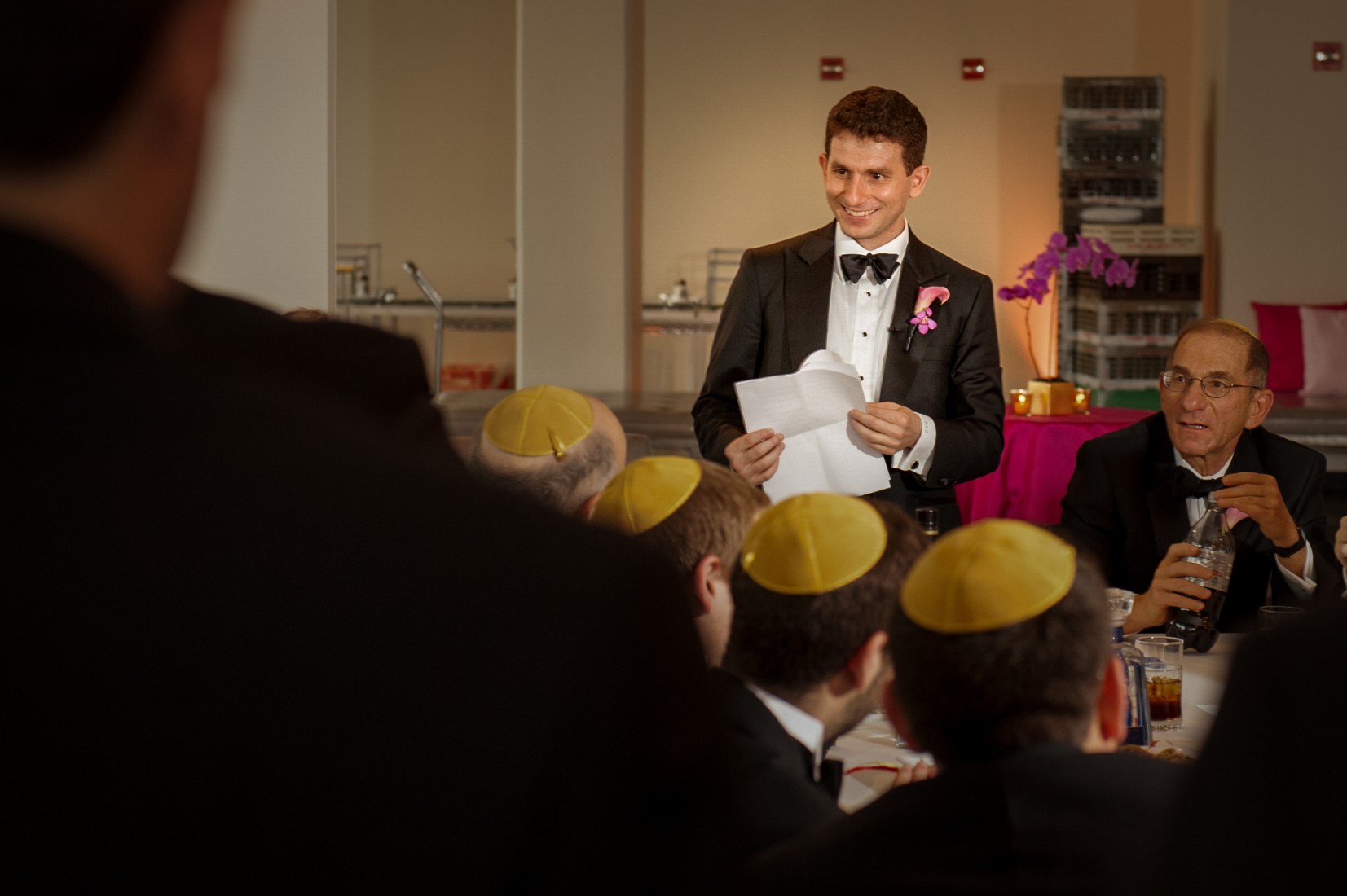
In Jewish wedding tradition, the bride and groom participate in a Tisch.
During a Tisch, groom is in a separate room with the men as they drink together and congratulate him. At the same time, the bride is in a separate room with the women as she greets the guests and they congratulate her.
Two photographers split up to capture these authentic moments of hand shaking, drinking and hugging before the ceremony begins.
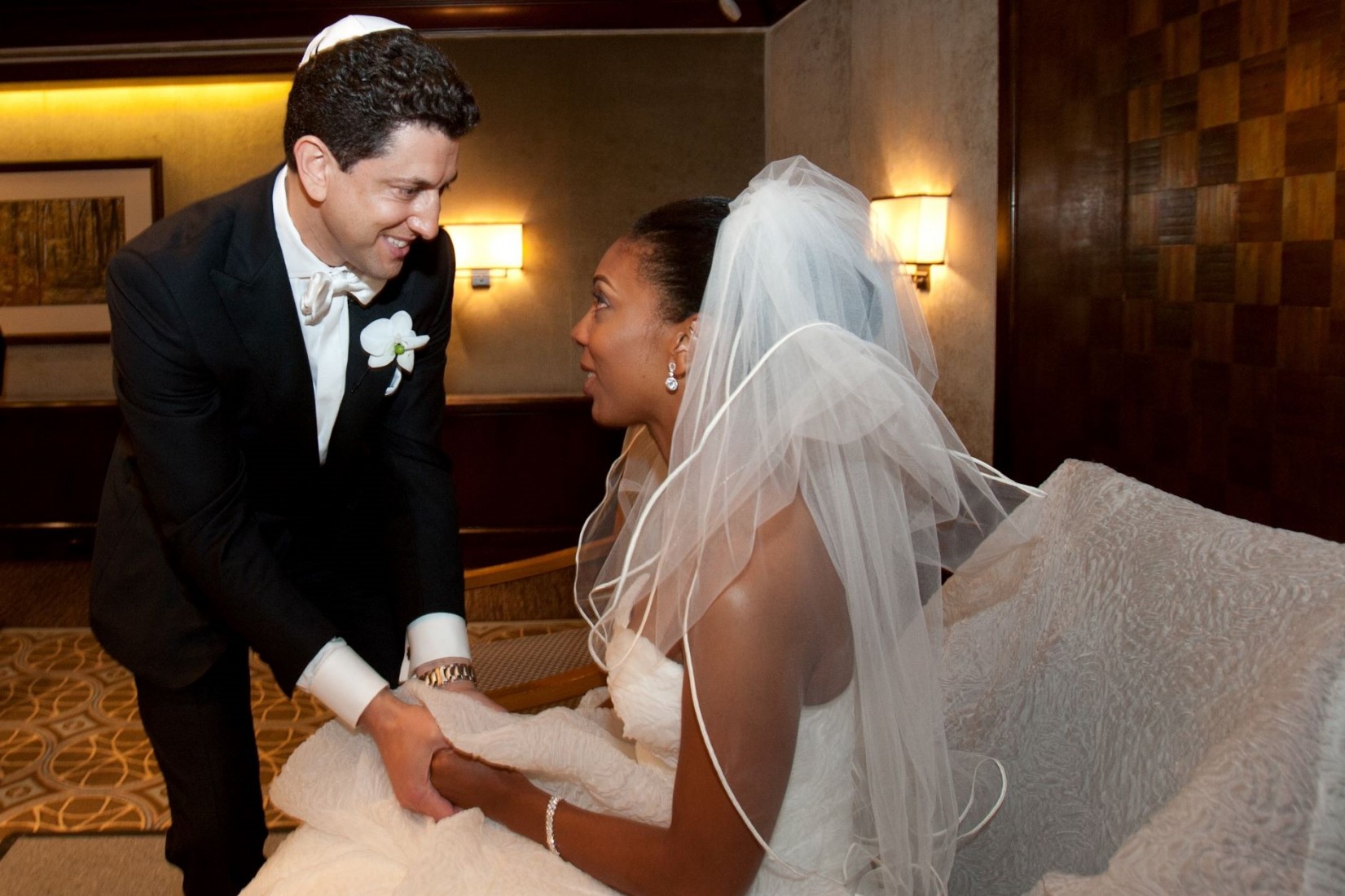
The Badeken is an ancient Jewish wedding custom where the groom veils the bride before the wedding. It’s purpose is to confirm that the groom is marrying the correct spouse.
Humorous anecdotes mention the bride’s father swapping his daughters before the ceremony, which forces the groom to marry someone else. Though this style of deception is irrelevant today, the Badeken remains a tradition in Jewish weddings.
The Badeken produces charming photographs of the groom lifting the bride’s veil for the first time.
The mothers of the bride and groom enter the men’s room to perform the plate breaking.
This ritual requires the mothers to simultaneously break a plate using either a hammer or the end of the table.
In Jewish lore, plate breaking is a symbol of commitment. The tradition says it is impossible to restore the plate to its original appearance from the broken pieces.
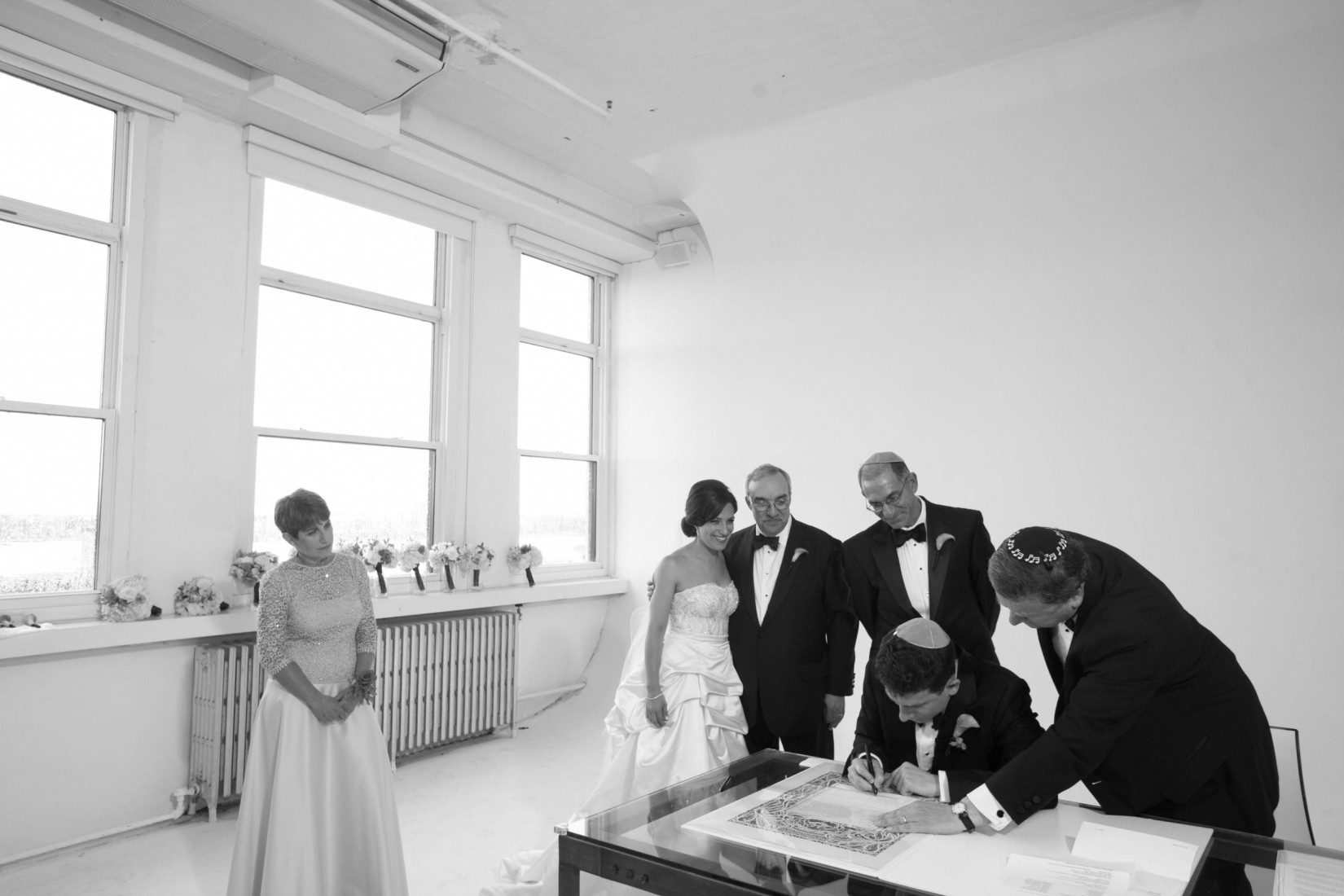
The Ketabuh is a Jewish marriage contract that outlines the duties and mutual devotion needed for a healthy marriage.
In Judaism, the wedding couple is officially married after signing the Ketubah.
Both fathers, family members, and close friends are witnesses to the bride and the groom as they sign their names on the Ketubah. After the signatures, the wedding ceremony can begin!
The rabbi and cantor read the document to the guests during the ceremony.
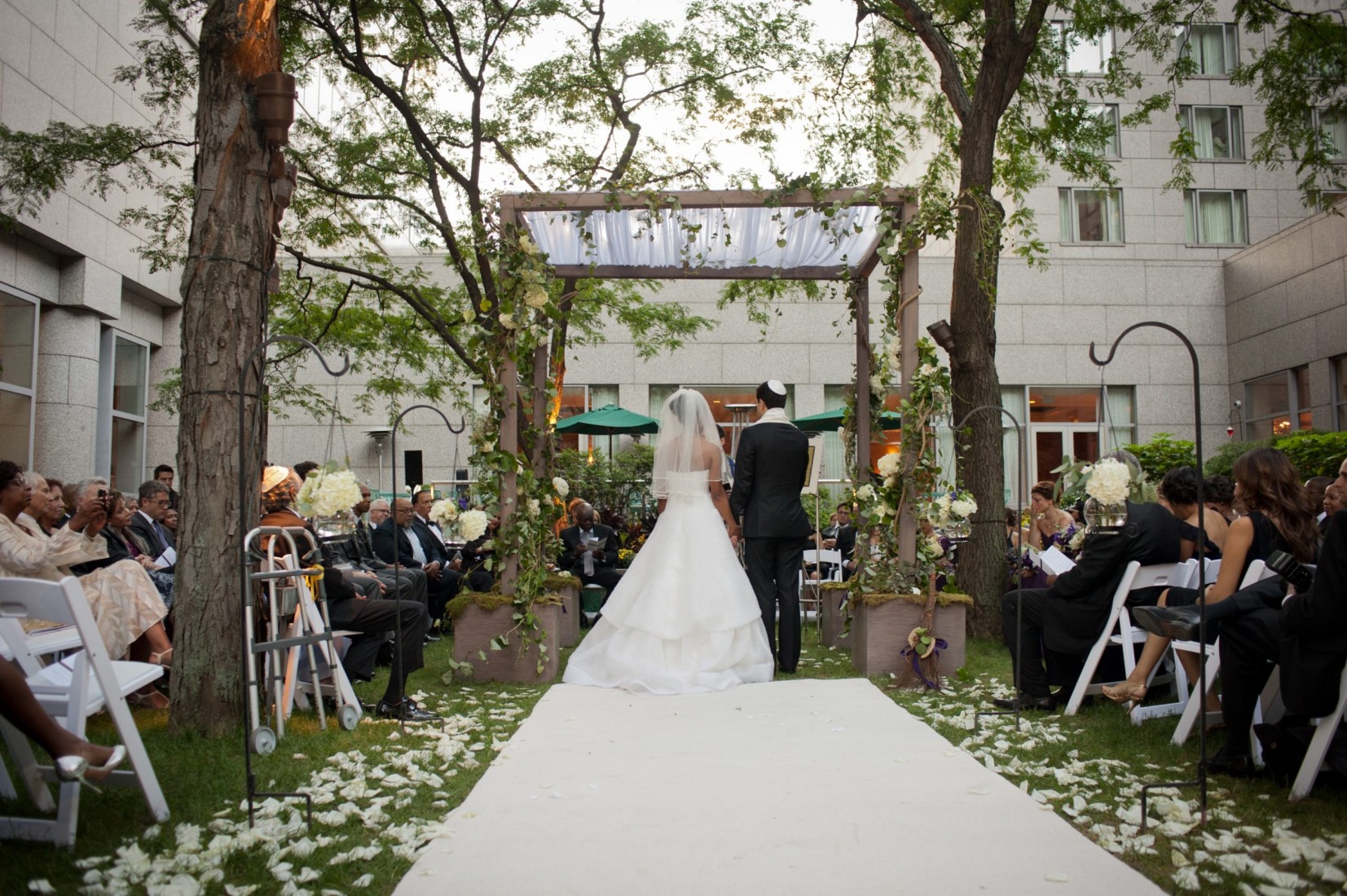
A Huppah is a blanketed canopy with four poles and four open ends that Jewish couples stand under during the ceremony. It is the centerpiece of the room and symbolizes the home that the couple will create after marriage.
As a professional photography studio, we capture many creative Huppahs at Jewish weddings. Some of them are circular with the guests surrounding them on all sides. Whimsical weddings suspend the canopy in mid-air.
White fabric is best for the Huppah because the light can enter and bounce off of it. Though your Huppah is beautiful, its busy design may block the light from entering underneath. These Huppahs are problematic for wedding photographers who know to direct their lighting downward from above the Huppah or behind it at a forty-five degree angle.
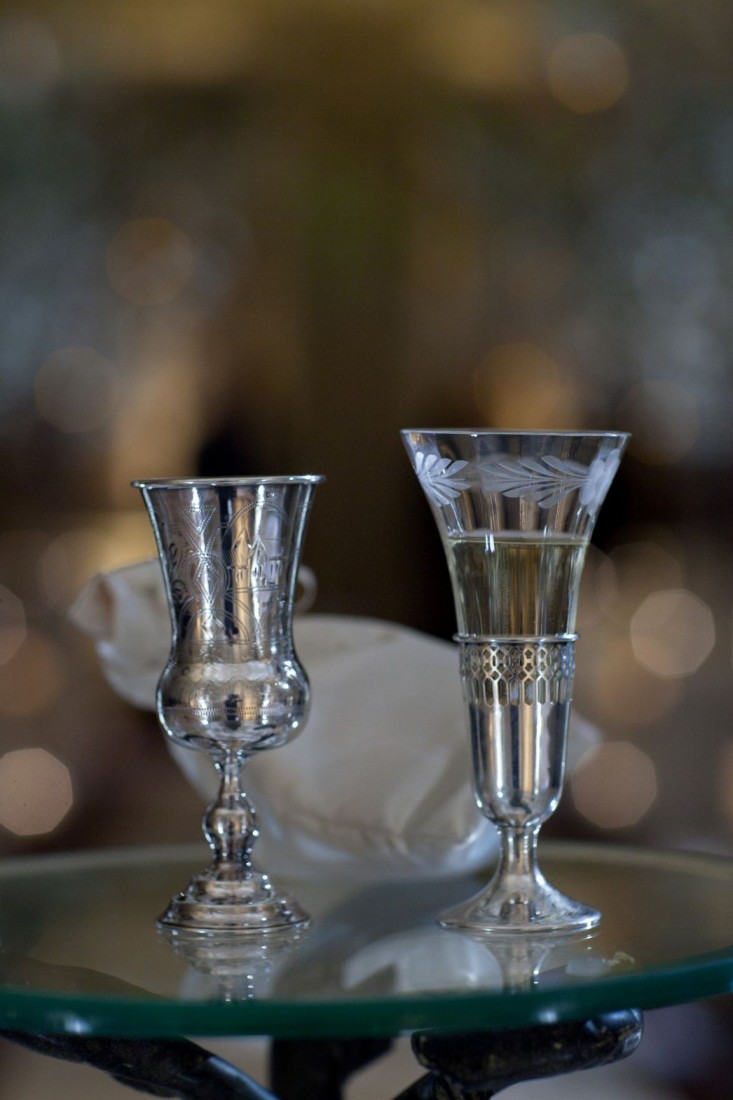
The Kiddush is the Jewish ritual of prayer over wine. The word directly translates to sanctification. Couples place Kiddush cups on a plate under the Huppah and fill the ceremonial glasses with Kosher wine or juice.
After the rabbi finishes the blessing, the wedding couple drinks from their Kiddush cups. This blessing gives thanks to God for the creation of the fruit.
Kiddush cups are beautiful works of art that some families pass down as heirlooms. Wedding photographers photograph Kiddush cups to add charm to the wedding album and preserve the memories of this holy tradition.
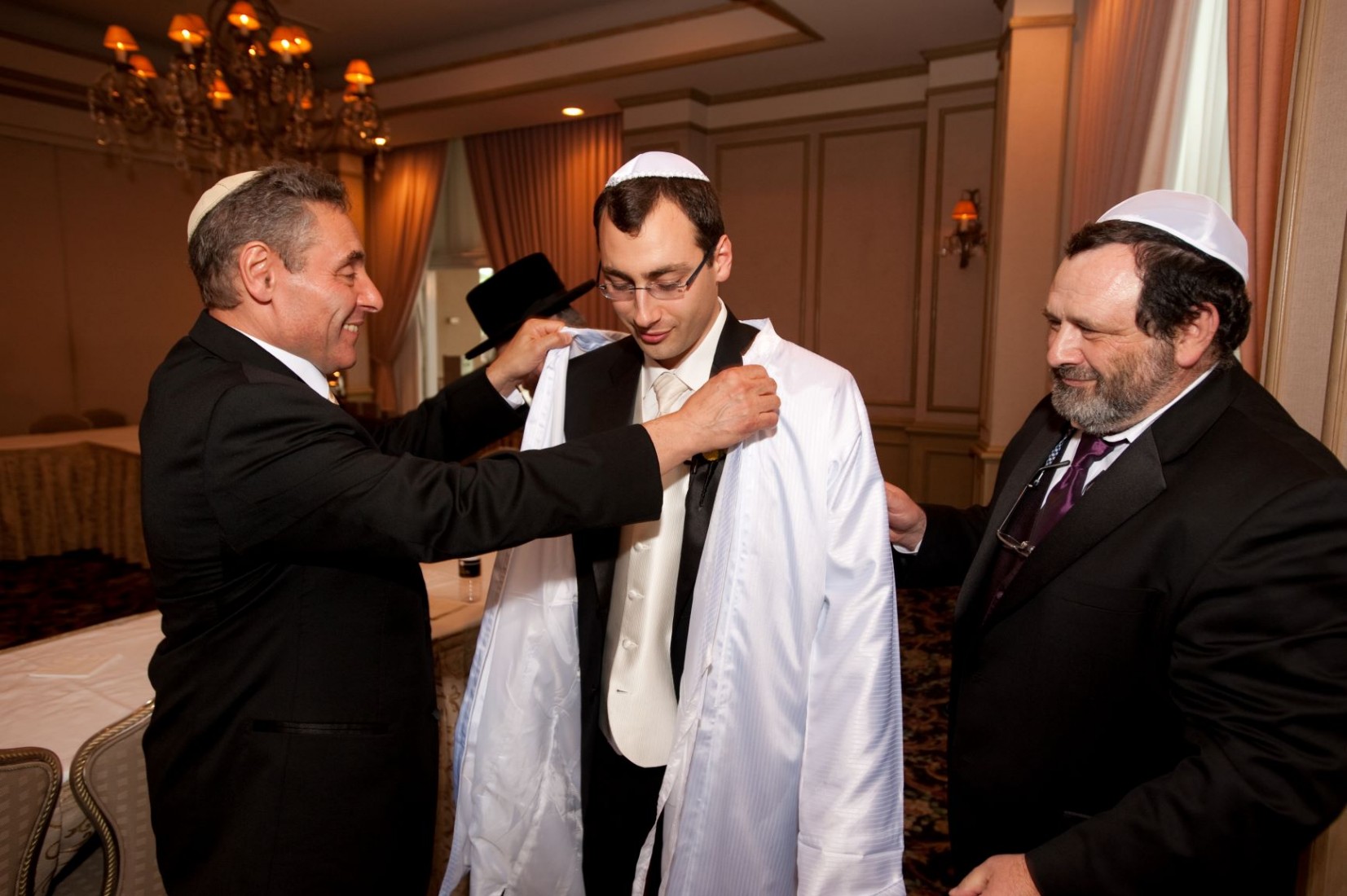
In Jewish orthodox weddings, the groom wears a ceremonial white gown known as the kittel. This garment often appears during Passover by the person leading the seder.
The groom wears a kittel during the wedding to symbolize purity and unity. It contains no pockets to express that the couple is marrying for love rather than possessions.
Other Jewish grooms may opt to drape a tallit (or prayer shawl) over their shoulders during the wedding ceremony. The tallit is either first worn during the bar mitzvah or presented to the groom before the marriage as a wedding gift.
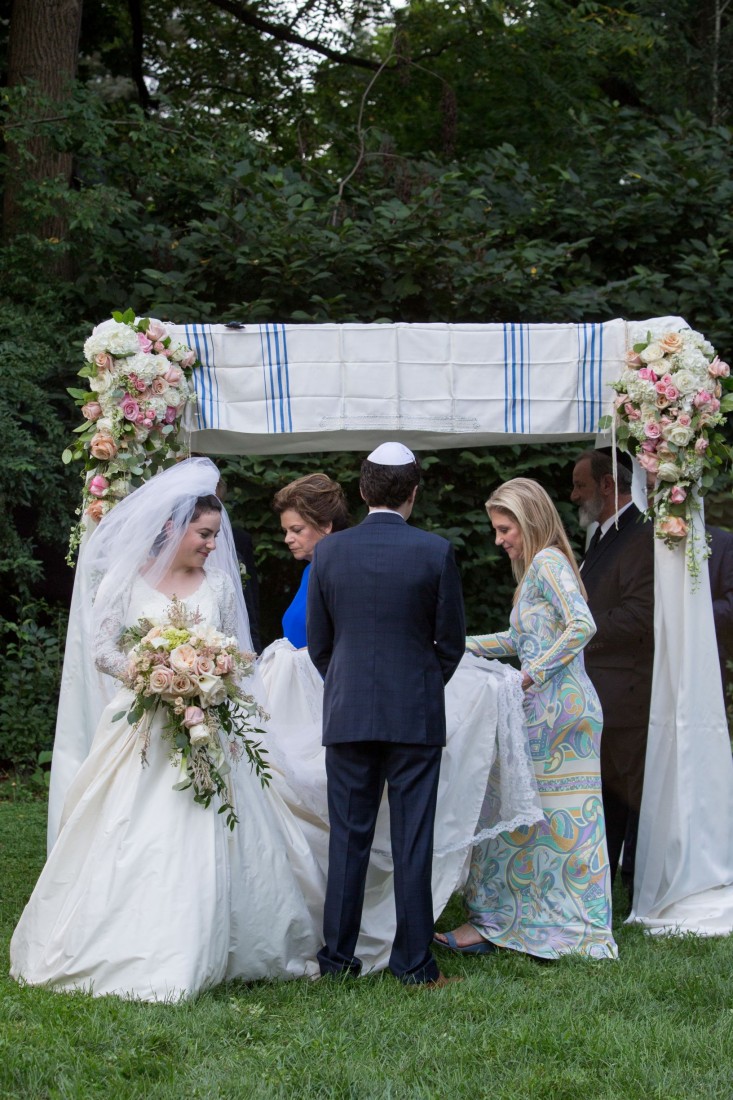
Once arriving under the Huppah, the bride circles the groom as both mothers accompany her.
This occurs seven times, which represents the bride entering the seven spheres of her lover’s soul. Through circling, the bride is creating a new “family circle” that arises from her marriage to the groom.
Wedding photographers have seven chances to capture this moment.
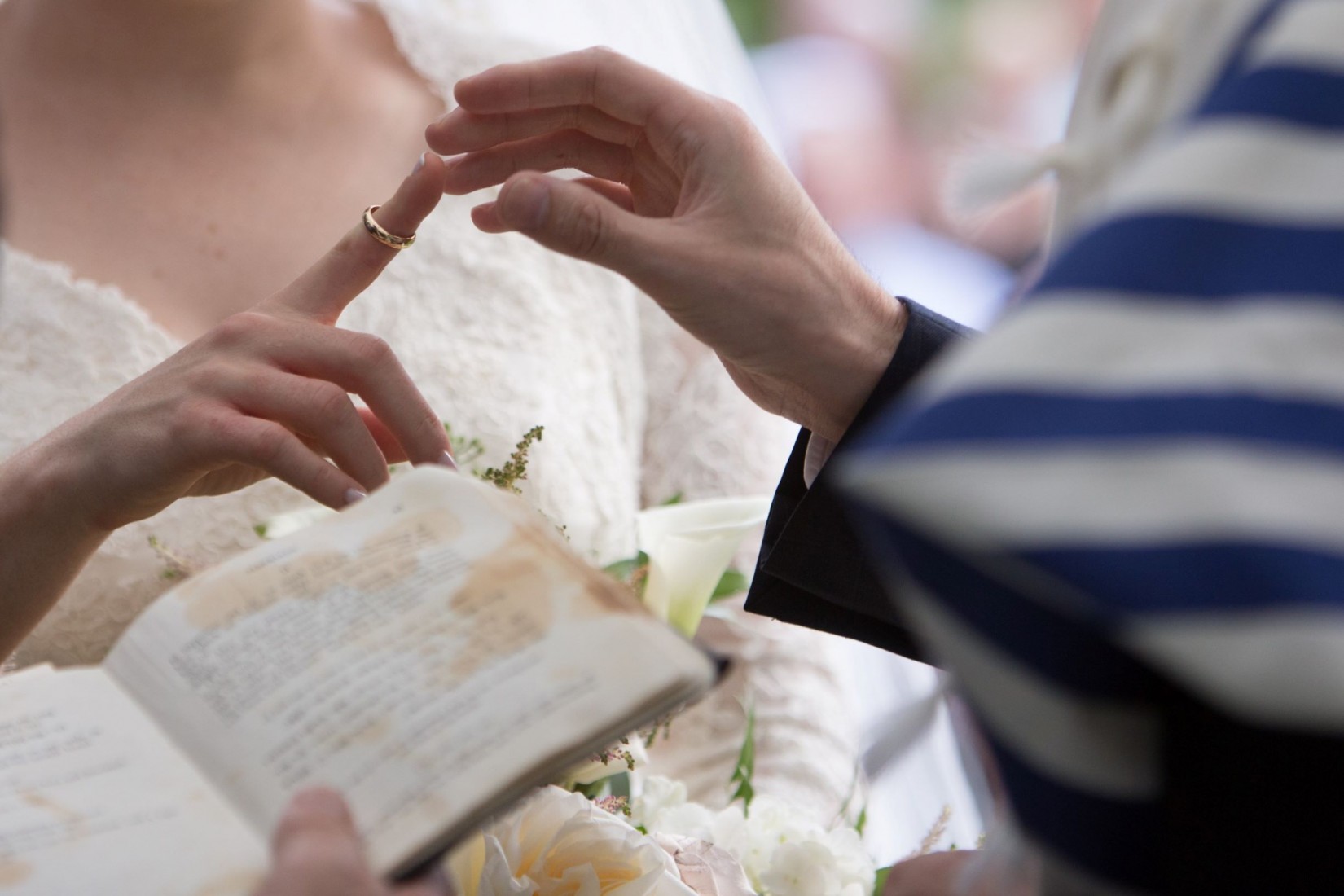
Ancient Judaic tradition says that there is a vein leading directly to the heart from the right index finger.
The bride gives her flowers to the maid of honor as the best man gives the ring to the rabbi. The groom receives the ring from the rabbi and places it on the bride’s right index finger. Once it is on, the bride swaps it onto her ring finger to blend with contemporary marital customs.
Photographers need to align themselves diagonal towards the bride to capture the groom placing the ring on her finger. Every time the bride or groom touch, drink or interact, the photographer should anticipate this to document compelling moments.
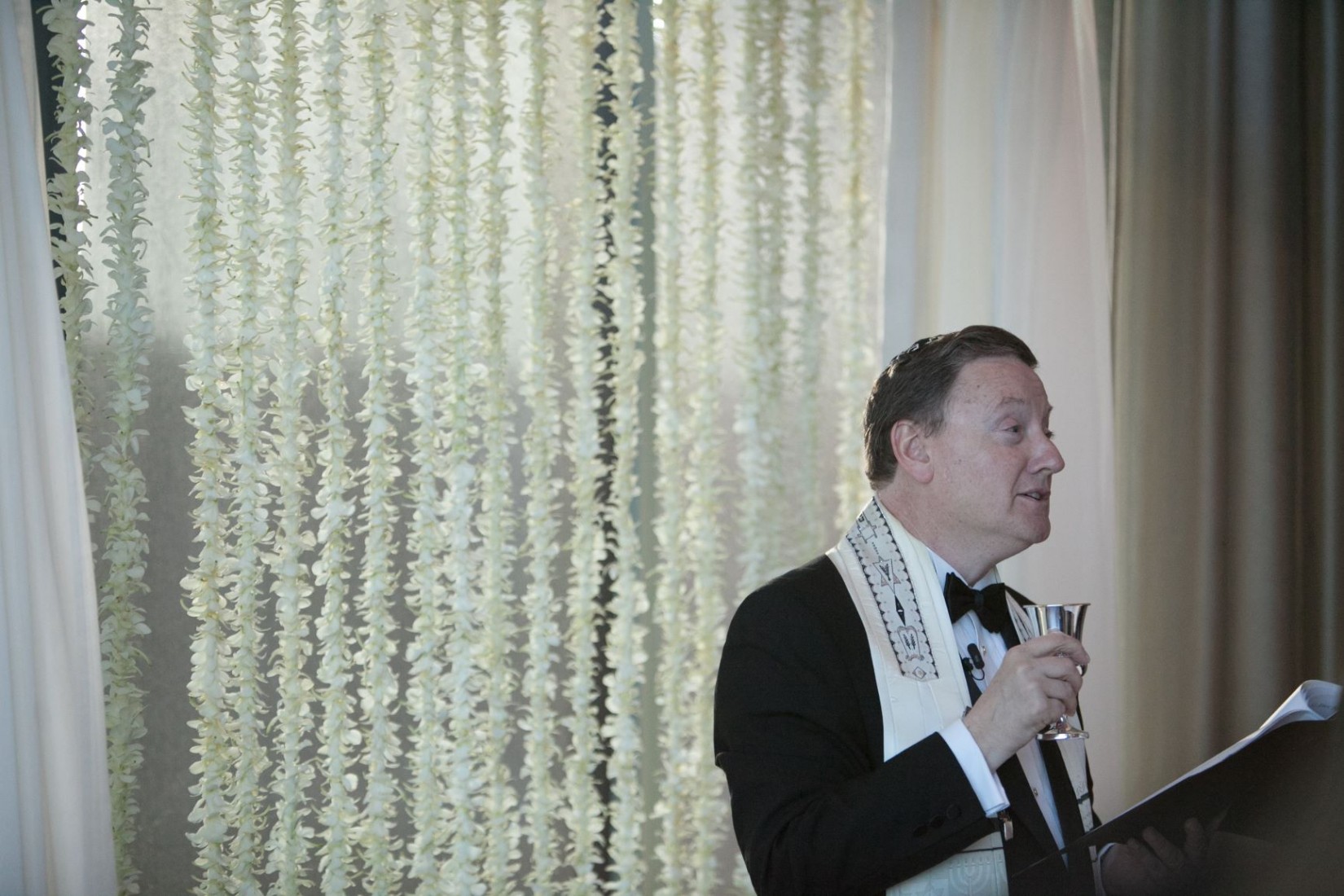
After reading the Ketubah, the rabbi and canter begin to chant the Seven Blessings to end the wedding ceremony. The rabbi reads the Seven Blessings in English as the canter sings it alongside him in Hebrew.
Other practices of the Seven Blessings include honoring special guests by asking them to read some verses of the blessing. According to traditional understandings of the Seven Blessings, it brings more honor to the family when many people participate in this service.
This blessing praises God and encourages the families to rejoice in the happiness of the new marriage.
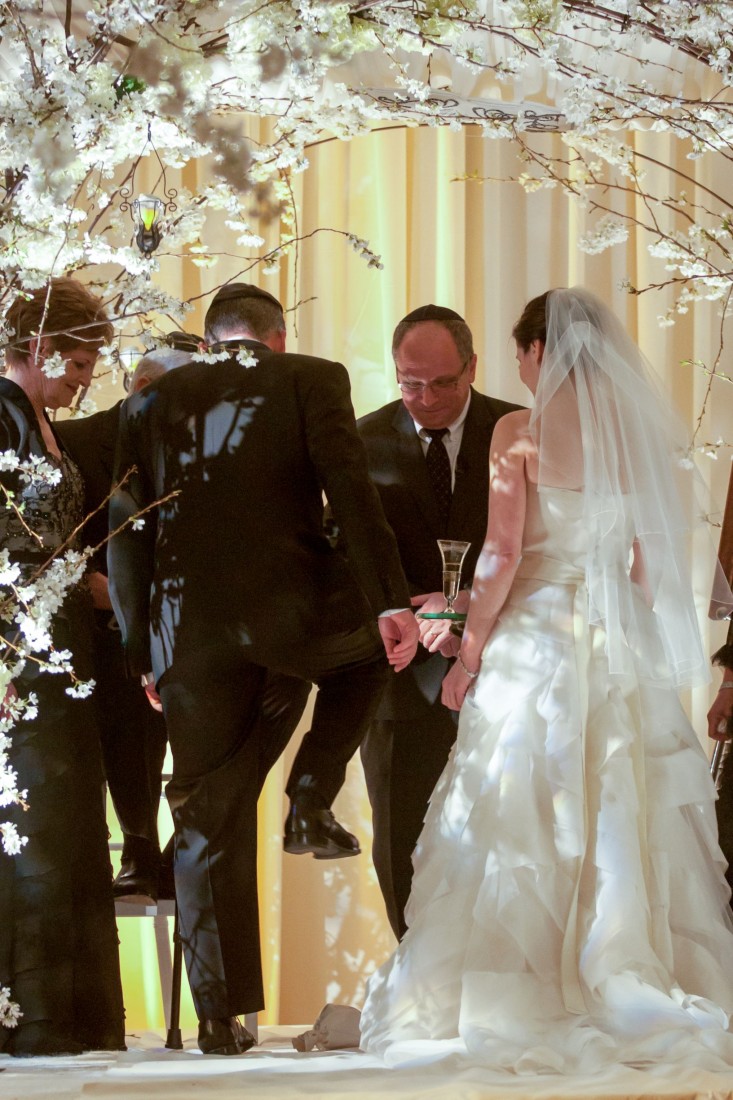
Stomping on the glass is a widely recognizable Jewish wedding tradition.
The groom stands to the left side of the Huppah, so he can stomp the glass with his right foot for the wedding guests to see. This abrupt shatter is met with cheers of “Mazel Tov,” an expression of congratulations and good fortune.
In reformed Jewish tradition, the bride and groom will kiss after he stomps on the glass. At Orthodox Jewish weddings, the bride and groom hug each other after the stomp, and guests will form a gleeful mob around the newlyweds.
There are several interpretations to explain why the groom breaks glass at the wedding ceremony. It is said that this tradition reminds everyone about the fragility of life and human relationships. Glass shattering is also a symbol of severing ties with childhood and the parental home.
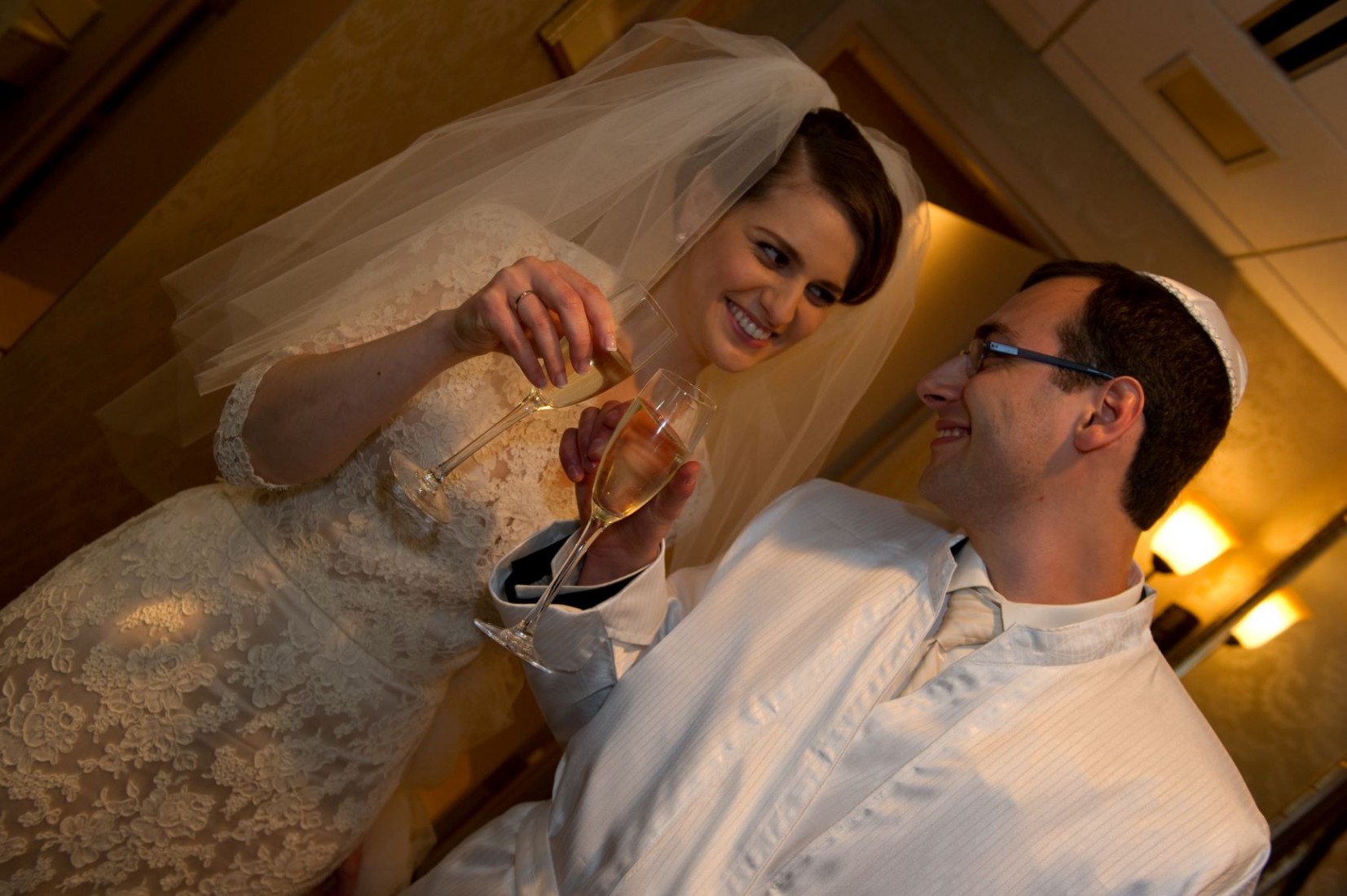
After becoming husband and wife in Orthodox Jewish tradition, the couple enters the Yichud Room to commence their marriage with a private union. This must occur on the night of the couple’s wedding.
Orthodox Jewish weddings forbid couples to see each other prior for First Look photos. As a result, the ideal moment to capture photos around the venue with the couple is after the Yichud Room.
Wedding photographers must work efficiently during the post-Yichud Room time block because the reception is beginning. The newlyweds need to greet their guests before they can eat at their sweetheart table.
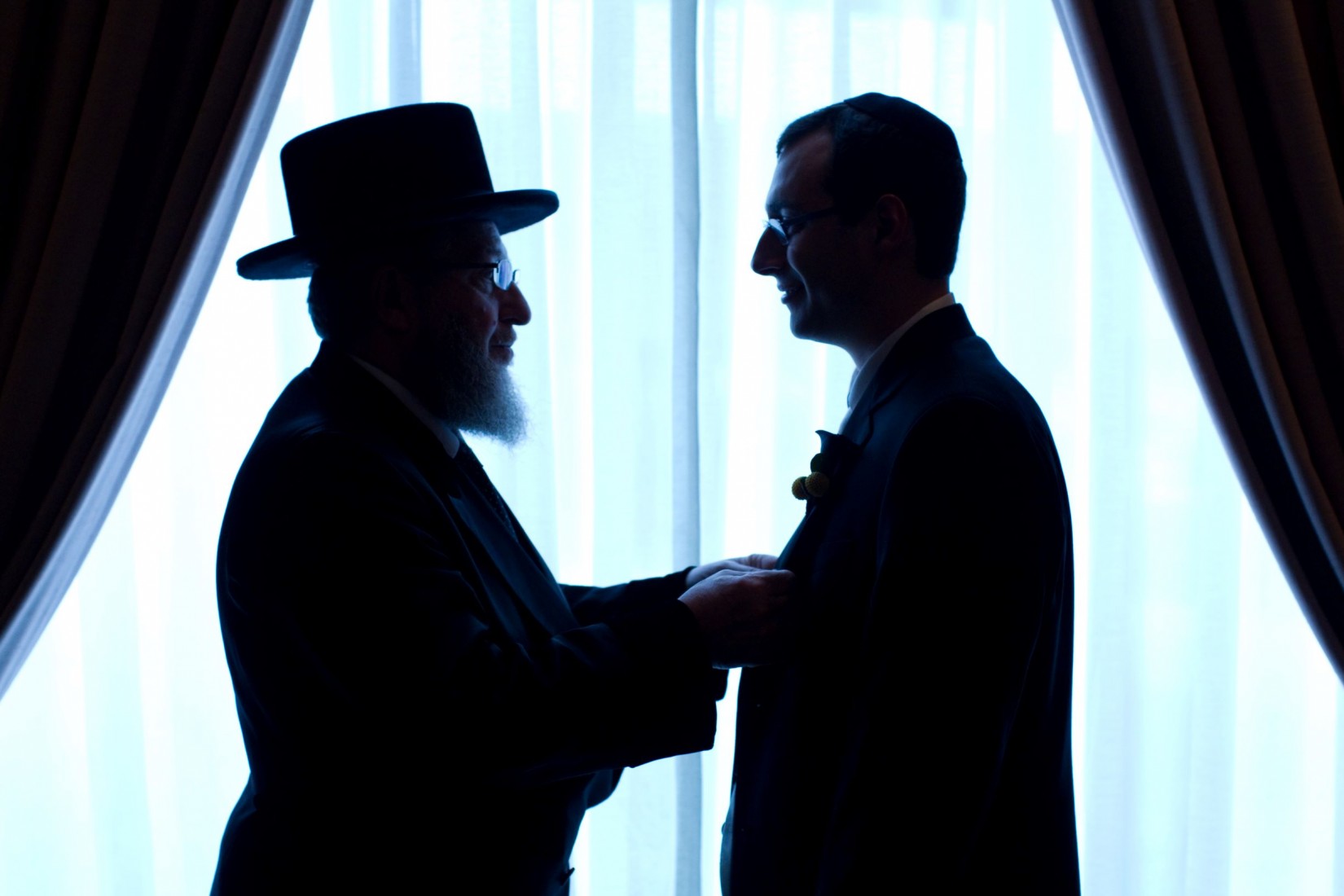
As a wedding photographer, it is humbling to capture Judaic ceremony traditions that couples will cherish forever in their album. These powerful moments demonstrate their spiritual love for each other, and every photograph should contain this incredible feeling.
After the wedding ceremony, the reception begins!
Read “Jewish Reception Traditions as Explained by a Wedding Photographer” to learn about the exciting customs that define these legendary celebrations.
Click here to browse the wedding portfolio by Phil Kramer.
"*" indicates required fields
© 2025 pkphoto.com. All Rights Reserved. Privacy Policy. Sitemap.